Few individuals have had more impact on photography, not to mention on society itself, than George Eastman. In 1878, Eastman, then a young bookkeeper in the Rochester Savings Bank, read about Charles Bennett’s improvements to the gelatin dry plate process and began to produce his own plates. By July 1879, he had patented a machine for coating glass photographic plates. Combining income from the sale of licenses for the process with $1000 from local buggy-whip manufacturer Thomas A. Strong, he founded the Eastman Dry Plate Company in 1881. In 1889, the company introduced celluloid roll film, and in 1892, changed its name to the final form, the Eastman Kodak Company. The origin of “Kodak” has always been something of a mystery; the most accepted explanation is that Eastman, always fond of the letter “K”, composed the name on an anagram set with the help of his mother.
The first cameras were simple wooden boxes, with the shutter cocked by a string dangling out of the body. Nevertheless, the original model was a landmark achievement, being
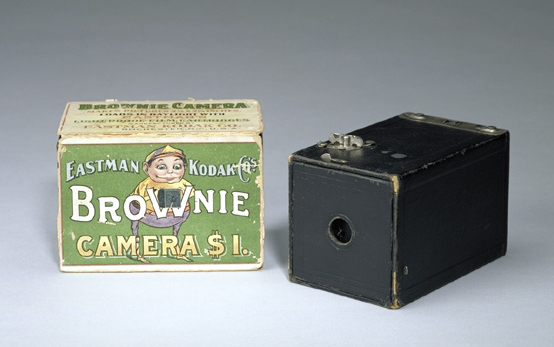
No. 1 Brownie, circa 1901
small, lightweight, and having the simplicity of roll film rather than glass plates. Eastman was greatly aided in his camera development by Frank Brownell, a cabinet maker who turned to the manufacture of cameras in the early 1880s. Brownell designed most of the early Kodak cameras, and was responsible for the design of the famous Brownie cameras, which for the first time brought snapshot photography within reach of the masses.
Once Kodak was firmly established in the consumer mass market, Brownell was instrumental in helping Eastman develop folding roll film cameras that appealed to the more serious photographer. These early folding “satchel” Kodaks displayed a square body
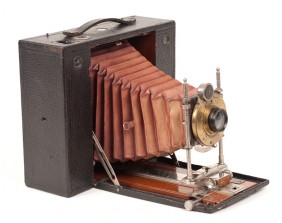
No. 5 Cartridge Kodak, 1898-1907
with a drop front forming the bed and focusing rail, while the top opened. to reveal the roll film holder. While large and bulky, they established a style of camera that, starting around the turn of the century, was to evolve into the small folding camera that was to dominate photography for the next forty years. Film came in various sizes, ranging from the relatively small 120 negative to the mammoth 7″ rolls of 115, designed for 7×5 in. vertical images with the No. 5 Cartridge Kodak. Beautiful videos of these early folding cameras are available on Jos Erdkamp’s web site at http://www.kodaksefke.nl/.
While the box cameras were simplistic and cheap, and the large folding cameras filled the needs of the professional and sophisticated amateur, what was needed was a compact camera with more features than the simple box. The first camera to fill this gap – and, incidentally, to set the template for the next century of roll film camera production – was another of Frank Brownell’s creations, the Folding Pocket Kodak of 1897. This

Folding Pocket Kodak, 1897 (Courtesy George Eastman House Collection)
unassuming little camera, with its single speed shutter and simple f/11 Achromatic lens, displayed three groundbreaking features: it used a bellows to collapse into a compact form that truly fit a pocket or small bag, it could be quickly loaded with readily-available roll film, and it introduced the 2 1/4 X 3 1/4 (6×9 cm) image that is still the standard for medium format today. Subsequent evolution was rapid. By 1900, the drop front and focusing rail had replaced the struts of the original Folding Kodak (see Folding Kodak ad), and by 1902-3, models of the Folding Kodak were available with variable speed shutters and apertures, as well as
Subsequent evolution was rapid. By 1900, the drop front and focusing rail had replaced the struts of the original Folding Kodak (see Folding Kodak ad), and by 1902-3, models of the Folding Kodak were available with variable speed shutters and apertures, as well as
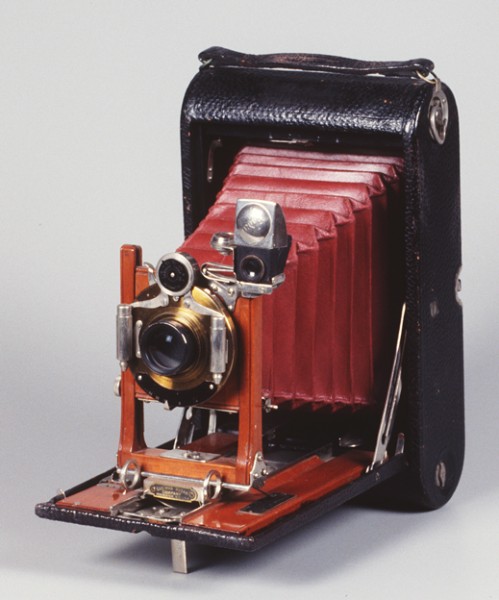
No. 4A Folding Kodak, 1906 (Courtesy George Eastman House collection). Note pull-out front standard, pneumatic shutter and aperture f-stop scale.
rising fronts for architectural work. This simple and functional design had a long life, with cameras of this type being manufactured well into the 1930s by both Kodak and many other manufacturers worldwide. Unfortunately, most of these beautiful old machines use film sizes that are no longer available and thus are strictly decorative.
Kodak Corporation had such a profound impact on the art and science of photography that it is easy to overlook George Eastman as a historical figure. A unique, caring and talented individual, he cared deeply about his many employees, frequently dispensing large portions of his considerable personal fortune to provide bonuses for his workers. His social philosophy, years ahead of his time, led him to institute a program of dividends and profit-sharing at Kodak. He was an extraordinarily generous philanthropist as well as an art collector. An extraordinarily creative inventor and innovator, he was one of the first American industrialists to employ a full-time research scientist. Plagued by serious ill health in his later years, he gradually gave away most of his fortune, wrote a note to his friends, and made the decision to take his own life on March 14, 1932 at the age of 77.
Given the millions of cameras produced by Kodak, with the multitude of models and the many lens and shutter combinations, the job of describing the best Kodak 120 roll film cameras for fine art work should be overwhelming – but it isn’t. Remember Kodak’s great experiment in the 1930s and 1940s (the heyday of roll film camera production) with 616 and 620 film? This axed Kodak’s contribution to today’s menu of usable roll film cameras. A list of Kodak’s models using 120 film is available on Mischa Konig’s excellent web site “Kodak Classics” (http://kodak.3106.net/index.php?p=206). It is shockingly short, and many of the models noted are simple box cameras, which makes Kodak’s contribution to the list of folding vintage cameras using medium format film and suitable for fine art photography very short indeed. Mr. Konig comments: “Kodak ceased production of 120 roll film cameras in the mid 1930’s, with the introduction of the 620 size, which is the same film on a slimmer spindle, and the only subsequent 120-film cameras from Kodak were manufactured in the UK in the 1950’s and ’60’s. The last 120-roll film camera from Kodak was probably the UK-made Brownie Cresta 3.”
Nevertheless, there are a few folding vintage Kodaks that use 120 film and take extremely high quality images; these all date from 1914 to the late 1920s. Much of the best work on this site has been produced with two such cameras costing a total of $40.00. For me, the greatest appeal of working with cameras of this vintage is the satisfaction proving that such neglected old relics can produce work that is of gallery quality in an era of multi-megapixel digital imaging.
Kodak’s designation of its constellation of roll film folding cameras is confusing, and different names were not uncommonly applied to the same model during the course of the production run. It is also important to remember that the numerical designation of many Kodak cameras in the 1920s referred not to the order of production but to the film size. An excellent source of well-organized information on early Kodak cameras and their complex nomenclature is Brian Coe’s Kodak Cameras: The First Hundred Years. An excellent description of Kodak lenses, unfortunately including only those from the 1930s on, can be found on Camerapedia at http://www.camerapedia.org/wiki/Kodak_lenses.
The most important consideration in deciding to purchase one of the many early classic Kodak camera is the lens. Many old Kodaks had only simple single-element meniscus
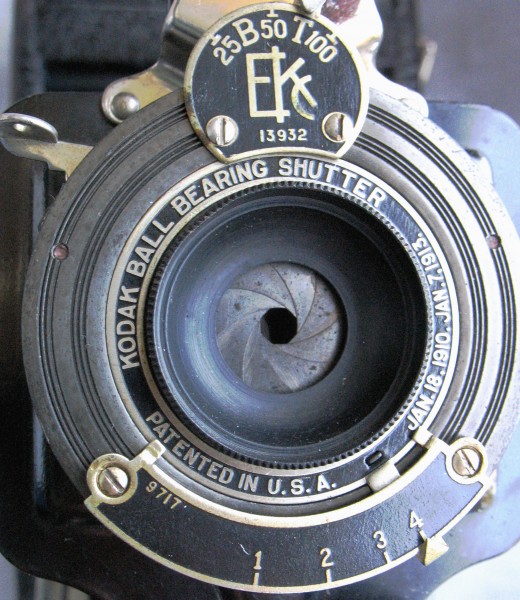
Meniscus Lens in Ball Bearing Shutter - Note Absent Front Lens Element and Bowl-Shaped Shroud
lenses. Meniscus lenses are identifiable by the presence of a metal front cover on the lens housing with a bowl-shaped depression surrounding a central opening and the absence of a visible front glass element. These lenses will not produce sharp images and should be avoided. The most common useful lens found on folding cameras of the 1914-1920 vintage is the Rapid Rectilinear, which, if used at apertures of f/16 or smaller, can yield stunning results. With cameras produced in the 1920s, look for an f/6.3 or f/7.7 Anastigmat. Less common lenses include the Tessars (either Bausch and Lomb or Zeiss), or, in the case of Kodaks manufactured in the U.K., the Ross Homocentric, Ross Xpres, Cooke Aviar (f/4.8 or f/6.3) or Cooke Series III.
Mention needs to be made of the Autographic feature, the 1920s equivalent of the modern databack. Found on many Kodak cameras until 1932, the Autographic feature consisted
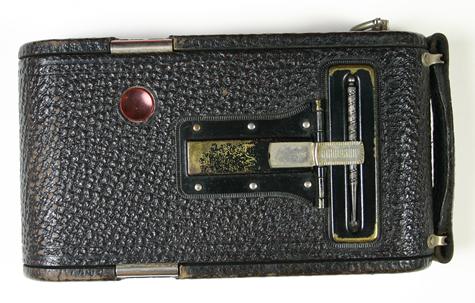
Autographic Door, Pre-1916 Version on No.1 Kodak Junior
of an elongated door that opened in the back of the camera, exposing the backing paper of the film. Kodak Autographic Film permitted a message to be written on the film between frames. The spool was wound with a layer of carbon paper between the film and thin red backing paper. After taking a photograph, the user would open up the small door on the back of the camera and, using the provided stylus, inscribe a brief note. Pressure of the stylus on the backing paper transferred the carbon to the backing paper. The user then held the camera back to the light for a moment and light passing through would image the message on the film (http://www.clickondavid.com/no1a.htm). Different door styles were used through the years, and can be used to date Kodak cameras of this vintage; the image shown here is the earliest (pre-1916) version. For a full description of the Autographic feature, see Mischa Konig’s article on his Kodak Classics web site at http://kodak.3106.net/index.php?p=511.
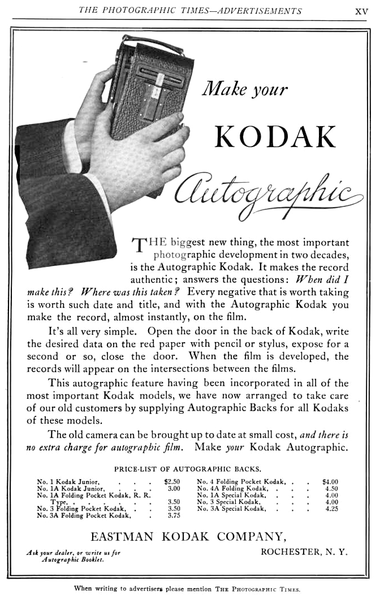
Kodak Ad for Autographic Back (From the Photographic Times v. 47 (1915), courtesy Wikipedia)
Not only is the Autographic feature an important characteristic of early Kodak cameras, its story is fascinating in itself. During the early part of the twentieth century, Kodak absorbed a number of camera companies, gaining many important features and subsidiaries. These have been described in Rudolf Kingslake’s “A History of the Rochester, NY Camera and Lens Companies.” Kodak’s story intersected that of Henry Jacques Gaisman in 1914. Gaisman, the son of French immigrants, was too poor to attend college, but proved to be a capable inventor and canny businessman. After inventing the glass-enclosed bulletin board at age 16, he patented the design for the safety razor in 1904. This was eventually adopted by the Gillette Razor Corporation, and Gaisman became the head of the company after Mr. Gillette’s death. In 1914, Gaisman invented the autographic camera back, and immediately sold it to Kodak for the considerable sum of $300,000. George Eastman wasted no time incorporating this feature into his cameras, with the first autographic backs appearing by December of 1914. A further note on this fascinating man is that, after living into old age as a confirmed bachelor, at the age of 82 Gaisman married Kitty Vance, a 33 year old nurse. They lived happily together until his death at the age of 104 in White Plains, New York.
One important note in purchasing an early Kodak Camera: A No. 1 camera and a No. 1-A camera are not the same! The two designations, though sounding similar, refer to completely different film sizes. Kodak cameras designated as “No. 1”, except for the earliest models, use 120 film, while cameras designated as “No. 1A” take the discontinued 116 film, which was one of the most popular sizes during the 1920s. The dimensions of 120 are 2 1/4 x 3 1/4 in or 6×9 cm, while 116 is a much larger and longer negative at 2 1/2 x 4 1/2 in. The two models can be distinguished by the much longer body of the 1A camera.
One of the earliest roll film cameras capable of doing fine art work is the No. 1 Kodak Junior, used to produce a number of the images on this site. First manufactured in April
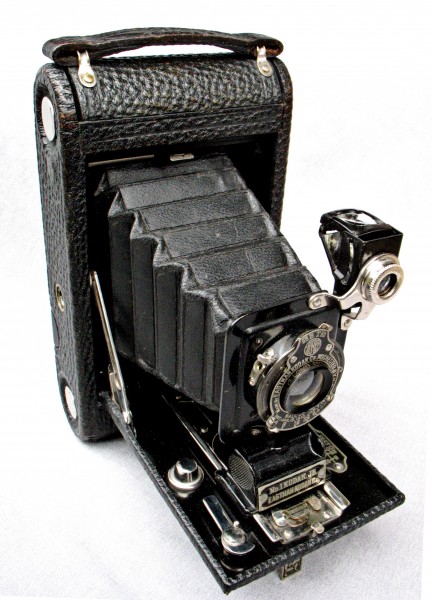
No. 1 Kodak Junior
of 1914, the non-autographic version was discontinued in December 1914 after a production run of 33,000 in favor of the version with the autographic back, the No. 1 Autographic Kodak Junior. The latter was made until 1927, with a total production of well over 800,000.
The No. 1 Kodak Juniors were typically equipped with a meniscus lens or a Bausch and Lomb Rapid Rectilinear, the latter being most common. The above 1915 advertisement mentions the option of an f/7.7 Anastigmat lens; the number of cameras produced with this option must have been small, as they almost never appear on eBay. Many of the older models have the f/ scale calibrated in the old “U.S.” system in which the maximum aperture is designated as f/4, which translates to approximately f/8 in the modern system (see “The US f-Stop System” posting, which is in preparation). The shutter is a Kodak Ball Bearing Shutter with four speeds: 1/25, 1/50, T and B. The Kodak Ball Bearing Shutter is simple, unsophisticated, unlubricated (hence no oils to gum up) and virtually indestructible.
The camera is easily loaded by removing the J-shaped back. The small
plastic film counter window typically contains colored plastic of an orange tint. While this was adequate with the slow emulsions of the 1920s or the heavy paper backing of autographic film, it is too light for modern fast emulsions, and light leaks can occur. The easiest solution is to use a pair of tweezers to slide two layers of thin red plastic between the flat spring film flattening plate and the inside surface of the orange plastic window, and then glue the plastic pieces down over the window with a small amount of silicone rubber sealant. If the plastic is missing or broken, gently lift the outer leather covering around the opening on the back of the camera, and slide the red plastic between the leather and the aluminum back plate of the camera. The leather can be re-glued with white tacky craft glue, thus re-securing the backing and holding the plastic in place.
Once the front is pulled down to form the base plate, the front standard can be pulled out to extend the bellows. Focusing is by three small click stops at the base of the front standard. There is, unfortunately, no eye level finder. If the camera is in good condition, the only real problem that one not infrequently encounters with cameras of this vintage is deterioration of the silvering of the viewfinder mirror. One solution to this problem is to buy one or two extra No. 1 Juniors to use for parts (they are cheap, after all, with some going for $10-15 on eBay) and mounting the best mirror on the camera chosen for use. The viewfinder readily screws off by removing the chromed threaded ring holding it to the frame.
The No. 1 Kodak Series III is an excellent choice for a low-cost camera capable of making excellent images. My No. 1 Kodak is fitted with the 105 mm f/6.3 Anastigmat in a Kodex shutter with speeds of 1/10, 1/25, 1/50, 1/100, T and B. Focusing is accomplished by pulling the front standard out to the stop, then using the thumb screw at the lower left of the standard for fine focusing. As with the No. 1 Kodak Junior, there is only a waist level viewfinder mounted on the front standard. One interesting and decorative feature of this model is the rotating exposure calculator built into the aperture lever. For each f-stop, the engraved scale matches “DULL”, “GRAY”, “CLEAR”, AND “BRILLIANT” with the appropriate shutter speed. Calculating backward using the Sunny f/16 Rule (discussed elsewhere in this blog) indicates that the film intended for this camera in the late 1920s had an ISO rating of approximately 25.
Other, less common models to consider among early Kodak roll film cameras are the No. 1 Pocket Kodak, the No. 1 Pocket Kodak Junior, and the No. 1 Pocket Kodak Series II, some of which came equipped with the f/6.3 or f/7.7 Anastigmat. These were manufactured from the 1920s until 1932. A somewhat earlier model to consider is the No. 1 Autographic Kodak Special Model A, produced from 1915 to 1920. Only 18,000 of these cameras were produced, so they are encountered only occasionally. These were equipped with a variety of lenses including the Zeiss Tessar or a variety of Anastigmats made by Bausch and Lomb, Zeiss, or Cooke. UK variations may be found with a Cooke Aviar, Ross Xpres or Homocentric, or even a Lacour-Berthiot Olor Anastigmat.
If one wishes the challenge of using a very early Kodak roll film camera, one might consider the No. 2 Folding Autographic Brownie. The Brownie series, inspired by George Eastman’s brilliant designer Frank Brownell, represents a separate and enormously successful branch on the evolutionary tree of Kodak cameras. It is unclear whether the Brownies were named after Brownell or Palmer Cox’s enormously successful cartoons and books about Scottish fairies, but Kodak borrowed extensively from Cox’s engaging cartoons in their advertising.
Designed as a simple box camera suitable for use by children, the first Brownie was made of cardboard and retailed for $1.00. From this early model (whose patent can be viewed at http://www.google.com/patents?vid=725034), the Brownie line expanded to a line of box and folding cameras produced into the 1980s that truly brought photography within reach of the masses.
The No. 2 Folding Autographic Brownies are very simple cameras, many of which were equipped only with a meniscus lens, but those provided with a Rapid Rectilinear lens should be capable of producing quality pictures. Note that a 120 film camera is “No. 1” in the regular line of Kodak cameras, and “No. 2” in the Brownie line. Unlike later roll film cameras, the Brownie is opened by releasing a sliding front catch and lifting off the entire front assembly bearing the baseplate, bellows, and front standard. The Kodak Ball Bearing Shutter has speeds of 1/25 and 1/50 sec in addition to T and B. focusing is by click stops at the front of the focusing rail. Many of these old folding Brownies will use the US f-stop system (see my posting on this topic). Dating the camera can be done by the presence or absence of the autographic feature (introduced in Feb 1916), a rounded case configuration (changed from square ended in Jan 1917), and the shape of the support foot (changed from S to C shape in Oct 1919).
NOTE: If you should wish to use a classic Kodak camera that takes 620 film, it is possible to respool 120 film onto 620 spindles. This is an inconvenience, particularly if one wishes to do any significant amount of photography. Alternatively, 620 film could at one time be purchased from Film for Classics in Rochester, New York. Their site is www.filmforclassics.com
References:
Baker, Chuck. “The Brownie Camera Page.” http://www.brownie-camera.com.
Bellis, Mary. “History of Kodak and Rolled Photographic Film. http://inventors.about.com/od/estartinventors/ss/George_Eastman.htm.
Camerapedia and Wikipedia articles on Eastman Kodak, Kodak Lenses, Henry Jacques Gaisman, Frank Brownell, and Palmer Cox.
Coe, Brian. Kodak Cameras: The First Hundred Years. Hove Collectors Books, West Sussex, 2003.
Cox, Palmer. “The Origin of the Brownies.” Ladie’s Home Journal, 1892. Cited in “The Brownie Camera Page”, http://www.brownie-camera.com/articles/origin/origin.shtm.
George Eastman House Online Collection. http://www.geh.org/technology.htm.
Kingslake, Rudolf. A History of the Rochester, NY Camera and Lens Companies, Online Posting, http://www.nwmangum.com/Kodak/Rochester.html.
Kodak Corporation web site. “George Eastman”, http://www.kodak.com/global/en/corp/historyOfKodak/eastmanTheMan.jhtml?pq-path=2217/2687/2689.
Konig, Mischa. “Kodak Classics.” http://kodak.3106.net/index.php. An excellent source for information on classic Kodak cameras.
Living Image Vintage Camera Museum. “Autographic Kodaks.” Online Posting. http://licm.org.uk/livingImage/Kodak-Autographic.htm.
Mc Keown, Jim, and McKeown, Joan. Collectors Guide to Kodak Cameras. Centennial Photo Service, Grantsburg, WI, 1981.

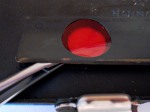
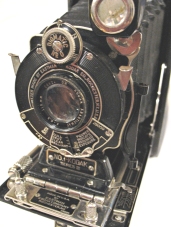

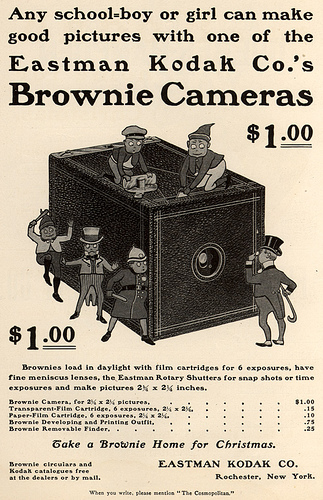
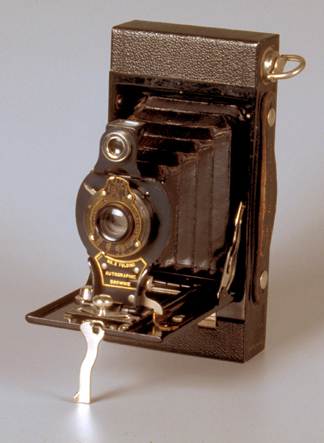


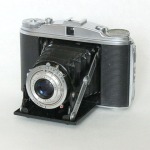
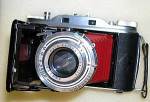
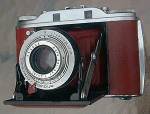
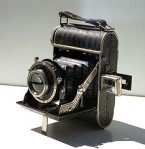
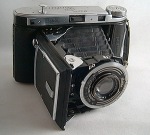
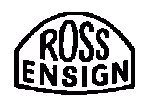

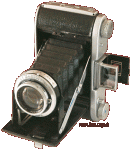
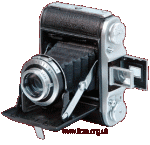
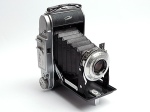
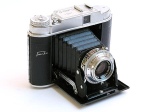
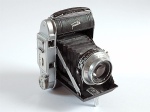
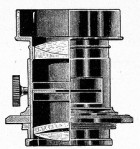
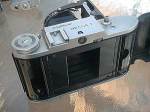
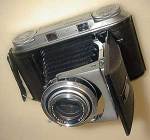

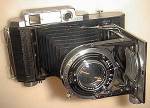
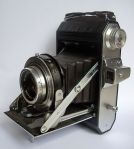

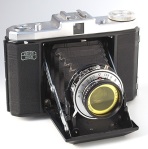
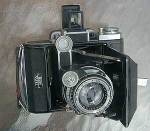
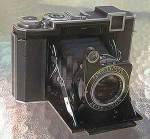




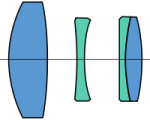


 Cooke lens. These changes helped address the Triplet’s shortcomings of longitudinal aberration while still allowing for a fast aperture. The lens had a speed of f/4.5 and covered 50 degrees. Its large aperture made it suitable for portraiture and work at fast shutter speeds.
Cooke lens. These changes helped address the Triplet’s shortcomings of longitudinal aberration while still allowing for a fast aperture. The lens had a speed of f/4.5 and covered 50 degrees. Its large aperture made it suitable for portraiture and work at fast shutter speeds.